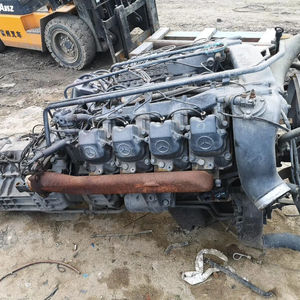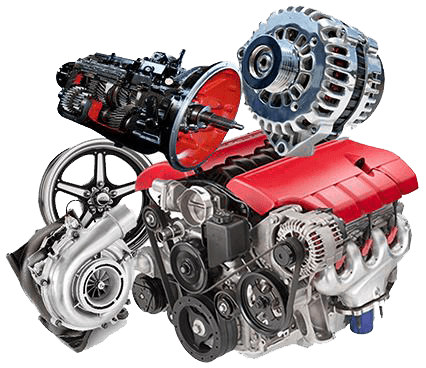Locating the most effective Offers on Opel Corsa Engine Parts
Locating the most effective Offers on Opel Corsa Engine Parts
Blog Article
Checking Out the Inner Workings of a Compact Lorry's Engine System
As drivers, we often consider provided the intricate procedures that occur within the confines of our car's engine system. The portable yet complicated machinery that pushes us onward is a wonder of design precision and control. From the regulated explosions in the burning chamber to the meticulous timing of gas shot, every component plays a vital function in the smooth operation of the engine. In this exploration of a compact vehicle's engine system, we will certainly unravel the internal operations of this mechanical harmony, shedding light on the mysteries that drive us forward on our day-to-day journeys.
Burning Refine Overview
The burning process in a portable vehicle's engine system is a crucial mechanism that efficiently transforms fuel right into energy to power the lorry. This process happens within the burning chamber of the engine, where fuel and air mix, stir up, and produce regulated explosions. The burning process contains four major stages: consumption, power, compression, and exhaust.
During the intake stage, the piston relocates downward, attracting in a blend of air and fuel right into the combustion chamber. The following stage, compression, entails the piston relocating upward, compressing the air-fuel mix to boost its effectiveness. Ultimately, in the power phase, the ignition system fires up the compressed combination, resulting in a rapid development of gases that requires the piston back down. This down motion creates the power required to drive the vehicle. In the exhaust phase, the burnt gases are removed from the combustion chamber through the exhaust valve, preparing the chamber for the next cycle. This cyclic burning procedure is fundamental to the procedure of a portable vehicle's engine system, guaranteeing efficient energy conversion for propulsion.
Piston and Cyndrical Tube Interaction

The piston's exact fit within the cyndrical tube is necessary for preserving ideal compression and avoiding power loss throughout combustion. Limited clearances between the piston and cylinder walls guarantee reliable sealing, permitting the piston to relocate smoothly without enabling gases to leak past. Proper lubrication is likewise crucial to minimize friction and wear between these parts, boosting longevity and efficiency.
Moreover, the style and products used in manufacturing the piston and cylinder influence engine effectiveness and sturdiness. Modern engines typically employ light-weight yet durable materials like light weight aluminum alloys for pistons and cylinder liners to lower inertia and enhance thermal efficiency. Generally, the harmonious interaction this post in between the piston and cylinder is basic to the engine's capability and total efficiency.
Gas Injection System Performance
Fuel shot systems in small car engines play a crucial duty in exactly delivering gas to the combustion chamber for regulated and effective ignition. The fuel injection system functions by infusing gas into the burning chamber at the ideal minute during the engine's procedure (opel corsa engine). This exact timing ensures that the gas mixes equally with the air for proper burning, leading to boosted fuel effectiveness other and reduced discharges
There are primarily two kinds of fuel shot systems utilized in portable automobile engines: port gas injection (PFI) and straight gas injection (DFI) PFI systems inject gas into the consumption port prior to the intake shutoff, while DFI systems infuse fuel straight into the combustion chamber. Both systems have their benefits, with DFI offering much better gas atomization and PFI providing a much more cost-efficient service.
Comprehending Engine Air Conditioning Mechanisms
Effective procedure of a portable car's engine depends greatly on the performance of its cooling mechanisms. Engine cooling is necessary to stop overheating, which can result in major damage and lowered performance. The air conditioning system in a portable vehicle normally includes numerous components working together to regulate the engine temperature. One important part is the radiator, which utilizes coolant to take in warm from the engine. As the hot coolant streams with the radiator, it launches warm right into the air, cooling off prior to returning to the engine. The water pump distributes the coolant with the engine and radiator, making certain a consistent circulation to regulate temperature. Additionally, the thermostat helps control the coolant flow to maintain optimal engine temperature. Some vehicles More Bonuses also have cooling fans that activate when extra cooling is needed, such as during heavy traffic or heat. Recognizing these engine cooling mechanisms is important for preserving the performance and durability of a small car's engine system.

Exhaust System Components Explained
The optimal performance of a portable automobile's engine cooling mechanisms relies on a corresponding system called the exhaust system, which comprises numerous crucial components for ensuring reliable emissions and engine efficiency. The exhaust system includes components such as the exhaust manifold, catalytic converter, muffler, and tailpipe. The exhaust manifold accumulates exhaust gases from the engine's cylinders and courses them to the catalytic converter. The catalytic converter after that converts unsafe contaminants in the exhaust into much less hazardous exhausts before launching them with the muffler and tailpipe.
One essential element of the exhaust system is the oxygen sensing unit, which keeps track of the oxygen degrees in the exhaust gases to aid regulate gas intake and guarantee ideal engine efficiency. opel corsa engine. Additionally, the resonator may exist in some exhaust systems to lower noise degrees. Overall, the exhaust system plays an essential role in preserving engine performance, reducing damaging exhausts, and ensuring a quieter driving experience for compact car proprietors

Verdict
In conclusion, the small lorry's engine system is a complex combination of elements that interact to promote the combustion process, convert fuel into power, and eliminate waste gases. Recognizing the inner workings of the engine system, including the piston and cylinder interaction, fuel shot system, engine air conditioning devices, and exhaust system parts, is crucial for maintaining optimal performance and efficiency of the car.
The combustion procedure in a small automobile's engine system is a crucial mechanism that efficiently converts fuel into energy to power the vehicle.Fuel injection systems in portable lorry engines play a critical role in specifically supplying gas to the burning chamber for effective and controlled ignition.There are primarily two kinds of gas shot systems utilized in small car engines: port fuel shot (PFI) and straight fuel injection (DFI) Understanding these engine air conditioning systems is crucial for preserving the performance and longevity of a portable automobile's engine system.
The ideal functioning of a compact lorry's engine air conditioning systems depends on a complementary system known as the exhaust system, which consists of different vital components for ensuring reliable discharges and engine performance.
Report this page